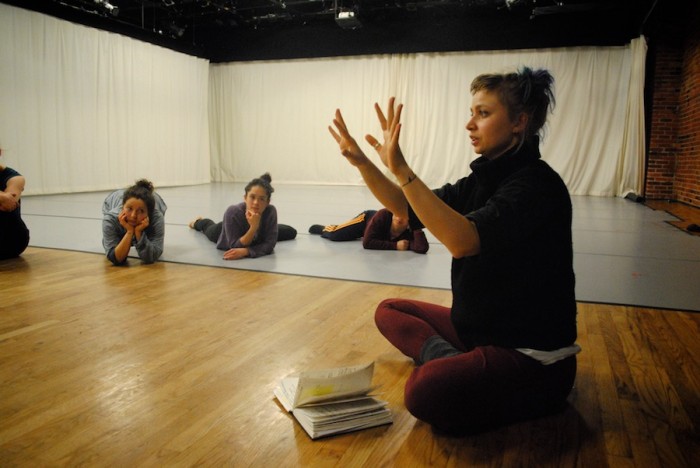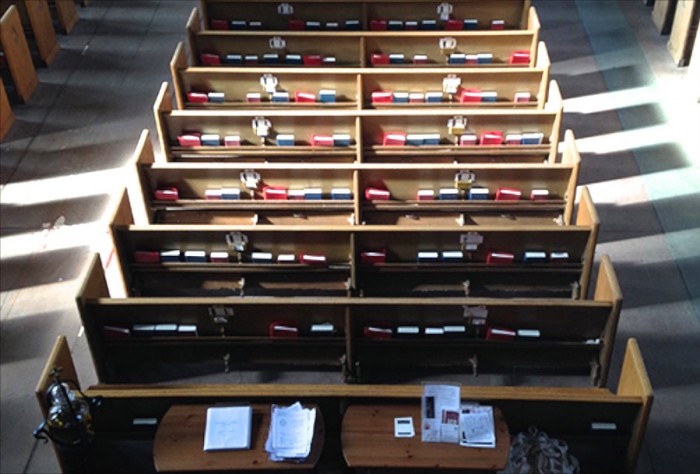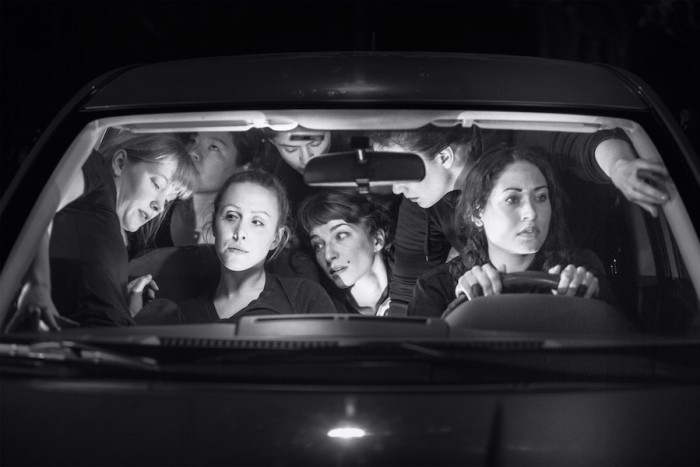
Alice Gosti isn’t afraid of much.
The Italian-American choreographer has performed dance pieces in the airport, thrown pasta on stage, and projected the names of all the people that she and her performers had ever slept with on the wall as part of a show.
She’s also not afraid to politely correct you on the pronunciation of her name (it’s pronounced “Alee-cheh”).
Gosti is a performance artist who has built a reputation bending the bodies of convention, literally and figuratively. She has a background in durational performance, which are long, multi-hour pieces along the lines of experimental artists like Marina Abramović.
So when I sat down in her apartment in the 12th Avenue Arts building to talk about her upcoming piece “How to become a partisan,” I was surprised when she let a little fear show.
I asked if she was confident about inviting audience members to take part in a five-hour performance and historical project centering around the Italian partisan movement. She laughed.
“Honestly, I’m really scared about that,” she said. “It’s terrifying.”
Gosti is artist who is always breaking new ground, and this piece is no exception. This time, she’s touching a subject she never thought was in her wheelhouse: political activism.
In “How to become a partisan,” Gosti explores the Italian partisan movement, which led the resistance against Nazi occupation, Mussolini’s fascism, and the class dominance of elites during WWII, from the mountains of northern and central Italy. Rather than relying on the concreteness of journalism or eighth-grade world history, Gosti tackles the subject in a way that is categorically her: through an immersive and bizarre performance that is set up to be as beautiful as it is disarming.
“How to become a partisan” will take place at St. Mark’s Cathedral. The music made in collaboration with composer Hanna Benn features an intergenerational choir, Italian wartime librettos, spaghetti western music, and samples from interviews with actual partisans taken during a trip to Italy last fall.
But on April 25, Gosti doesn’t expect audience members to know much about this moment in Italian history at all. Encouraging people to come and go as they please during the five-hour performance, where the audience can freely walk around the space and experience different elements at different times, her only hope is that people leave sparked by questions about writing their own history: What should be different? What should you do? What makes you act?

“This is not my manifesto of politics and philosophy, that I believe this is bad or good,” said Gosti. “I want to be a generator of questions.”
Still, everything — from the length of the performance to her decision to select an all-female cast of dancers — has Gosti’s own subtle political slant.
Born in Italy with one American and one Italian parent, Gosti is accustomed to drawing from her different backgrounds and the tension between them as inspiration, including the conflict between instant gratification and a slow burn.
“In a time where we say there is not enough time and there’s not enough space, I’m making people feel the discomfort” says Gosti, of the lengthy show. “Or what if it’s not discomfort? What if it’s your choice to slow down?”
Her feminism, too, emerged with this piece. Though she always shied from the label, the uncovering of the history of women in the partisan movement stirred something. Gosti likened the women of the partisan movements to batons in a race, passing crucial information that was only made possible by their gendered invisibility.
Their perceived harmlessness, explained Gosti, allowed women to move between exposed parts of the country, bringing information to the male soldiers who were the faces of resistance. When the war ended, women in Italy earned the right to vote, which some people say was in return for their wartime contributions.
“It was a very important time for women because instead of being an object, they became a subject,” said Gosti. “They became decision making, capable of destruction … not just nurturing and caring.”

With the women of the partisan movement in mind, Gosti worked themes of masculinity, aggression, and assertiveness into the movements of female dancers, urging them to embody the foreignness of these characteristics. The work is a playful commentary on the gender politics that still exist today.
Like Gosti, the piece itself has two homes. It was commissioned and produced through Velocity’s new dance development program supporting Northwest artists, “Made in Seattle“, and Gosti further developed the ideas of the show through an Italian residency last fall. The residency allowed Gosti to travel back to Italy to interview aging partisans about how information traveled, the role of women in the movement and why they joined.
When she returned, the inspiration for “How to become a partisan” was born. Though centered in a moment in history, Gosti draws on her current experiences of gender and visibility, and the political momentum behind both the Black Lives Matter movement in the U.S. and the European financial crisis.
Though she calls “How to become a partisan” her first overtly political performance, Gosti won’t do anything conventionally – even activism. She said the street protests in Capitol Hill following the shootings of Michael Brown and Eric Garner had her feeling both inspired and conflicted.
“We love to commune. To be together, to feel together,” she said. “But I don’t think that activism strategies that belonged to the ‘60s or ‘70s are relevant now.”
Instead, she sees art as taking an important place alongside demonstrations and protests. Performances like this one, she hopes, might ask people to take a stake in their own history.
“We actually have a lot more responsibility than we think.”
What’s she’s less concerned with is the seemingly obvious: entertainment, and beauty.
“Beauty happens, in my opinion,” she says. “But I’m not interested in that being my motor.”
Come watch beauty happen at “How to become a partisan” from 3:30 to 9 p.m. April 25 at St. Mark’s Cathedral. More info here.

